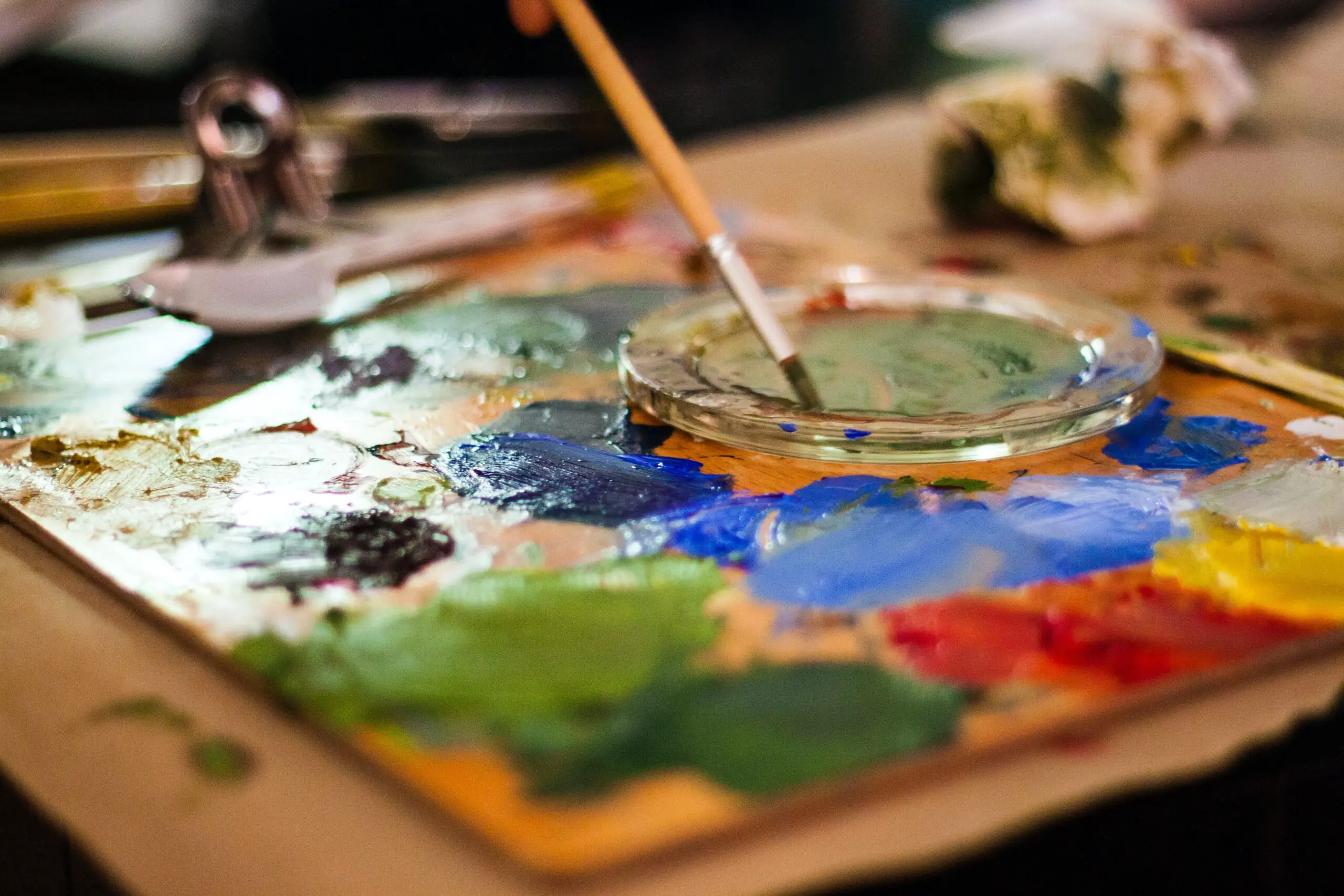I have some old acrylic paints on my shelf which I thought of using after many years. Will these still be good? Can acrylic paints be expired, having kept them for so long? I was determined to start looking into it and discovered many exciting things.
Acrylic paint does not expire since it is a chemical made out of water, acrylic binders, pigments, and additives. The paint is usable if it is not completely dried and is spreadable. Acrylic paint does not become clumpy, stringy, bad smell, or dry if handled and stored properly.
Reading this article you can find out how to decide whether or not to use your old acrylic paint and learn all the facts about acrylic paint expiration and its causes.
Can you use expired acrylic paint?
Expired acrylic paints can be used unless it is dried out. If you notice that your paint has clumps, a bad smell, and separated pigments and binding material, the paint has gone bad or expired. But all these can be fixed and used on the price of the quality of the artwork.
As you know, acrylic paint has no set expiry date. It has a shelf life as opposed to that. However, using this gone-bad acrylic paint will be a personal preference. It’s essential to think about the disadvantages that could arise from using expired acrylic paint. Acrylic paint that has gone bad may have changed in consistency, adhesion, drying time, and color.
It could be challenging to produce the intended effects or correctly mix colors if the paint functions differently than expected. Although there are typically few health dangers involved with using expired acrylic paint, the paint’s formula may have changed over time. Take into account how important the project you’re working on is.
Consider whether expired paint’s dangers and potential disadvantages outweigh the potential savings. The choice to use expired acrylic paint ultimately comes down to your preferences, risk tolerance, and particular circumstances. It’s necessary to check the paint’s condition, test it on a tiny area, and be ready for any unexpected differences or disappointing outcomes.
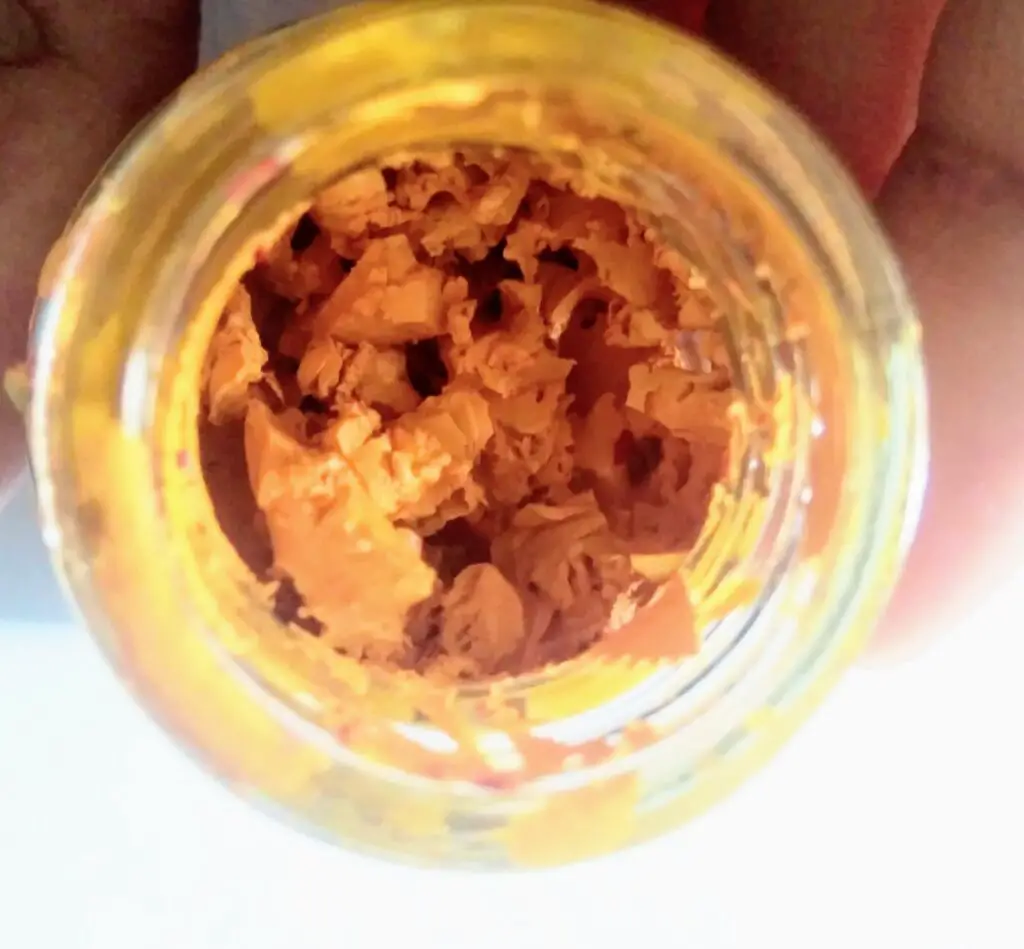
How to identify acrylic paint that has gone bad?
It’s important to remember that paint can lose quality and effectiveness over time, even if there are no signs of deterioration. It’s always safer to use relatively new paint for the best results and best quality.
There are a few things to watch out for to tell if acrylic paint has deteriorated.
- It may be a sign that the acrylic paint has degraded or tainted if it produces a strong, unpleasant smell that is different from its typical smell. Trust your guts, and lean on caution if the smell seems off-putting or strange.
- It indicates that the binder and pigments have separated when acrylic paint separates into separate layers with a watery or oily layer on top. Due to this separation, the paint may function differently than expected making it challenging to combine.
- Paint that includes clumps or lumps that are difficult to blend back into the paint may indicate drying or hardening of paint. These clumps can change the texture and consistency of the paint, making it difficult to apply smooth brushstrokes. You can read more about clumpy acrylic paints and how to fix it in the following article; Lumpy acrylic paint: why that happens and how to fix it
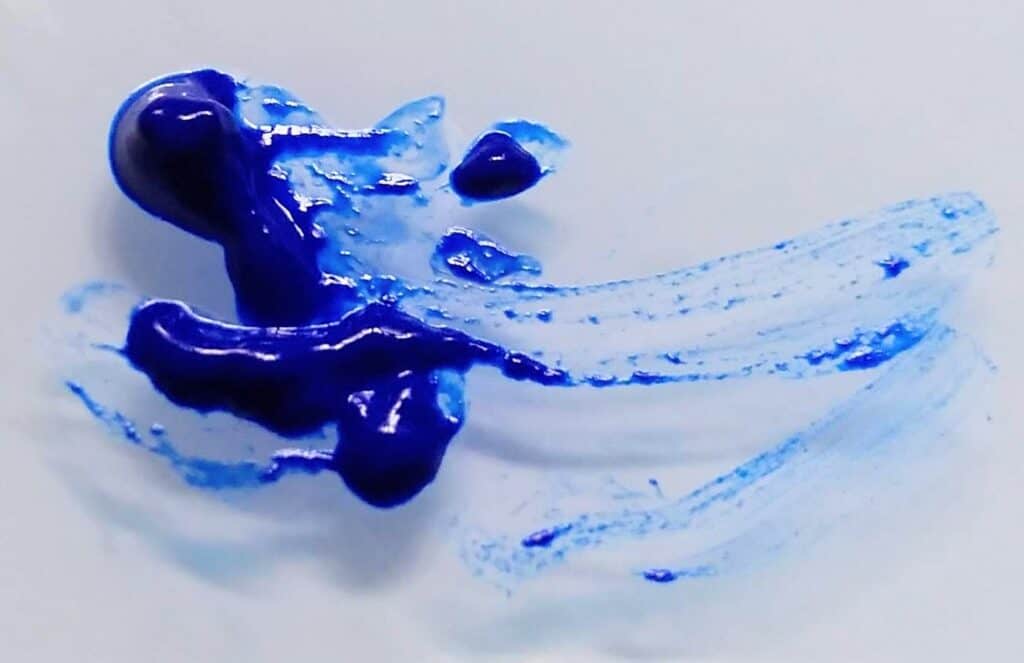
- Changes in texture or color may occur with old acrylic paint, including fading, darkening, or shifting hues. The consistency of the paint could also change to become thick, sticky, or rubbery. Your artwork’s overall appearance and quality may be affected by these changes.
- If you notice mold growth or other obvious contamination, such as odd spots, fading, or outside particles in the paint, it can be a sign of paint degradation. Contamination or mold can be harmful to your health and should be avoided.
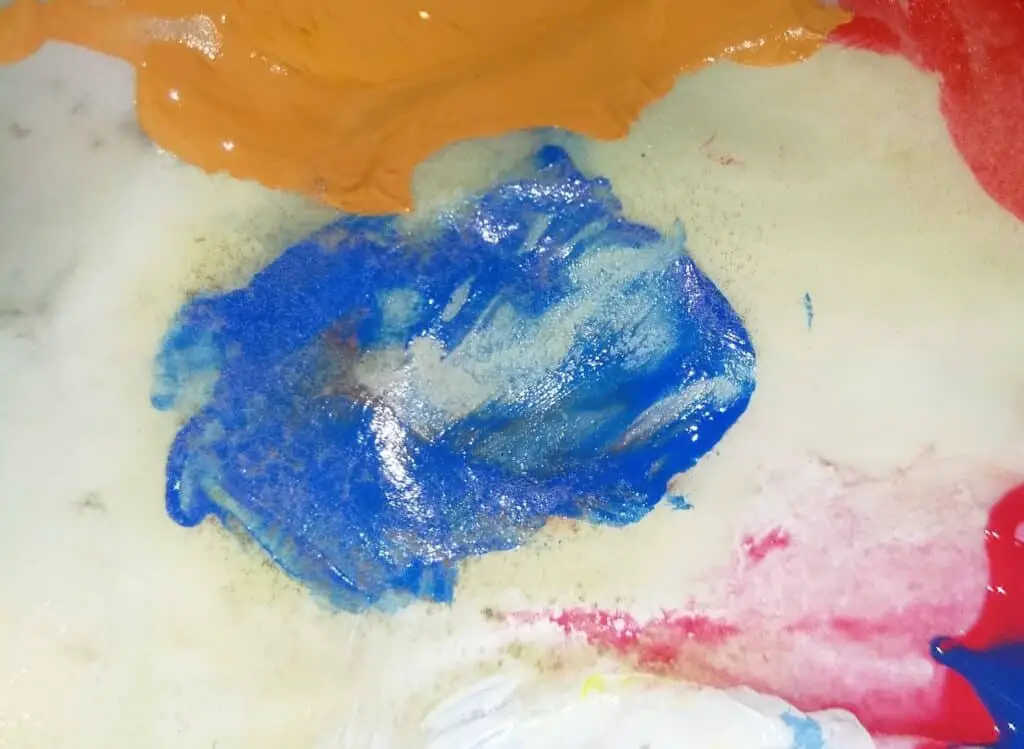
You can also read the following article to know more about How can you tell if acrylic paint is bad? (common signs).
What happens if you use expired acrylic paint?
Using acrylic paint that has expired or is past its shelf life could have several adverse effects. Here are some typical issues that can arise.
Reduced adhesion and durability: Acrylic paint that has reached the end of its shelf life may lose its ability to stick to surfaces. Over time, it might also develop a propensity for flaking, peeling, or cracking. It may impact the lifetime and durability of your artwork. This is one of the major concerns of using expired acrylic paint in your artwork, as you might realize that your time and creativity have been spent on a nondurable artwork.
Color Changes: Color changes may occur with acrylic paint that has reached its expiration date. Over time, the paint’s pigments may change, changing the color’s hue and intensity or producing different shades. It may impact your artwork’s quality.
Issues with texture and consistency: Old acrylic paint may thicken or take a lumpy or rubbery texture. It could become tricky to work with, making it challenging to create consistent coverage or smoother brushstrokes. Your artwork’s expected effects and features may no longer be there due to the altered consistency.
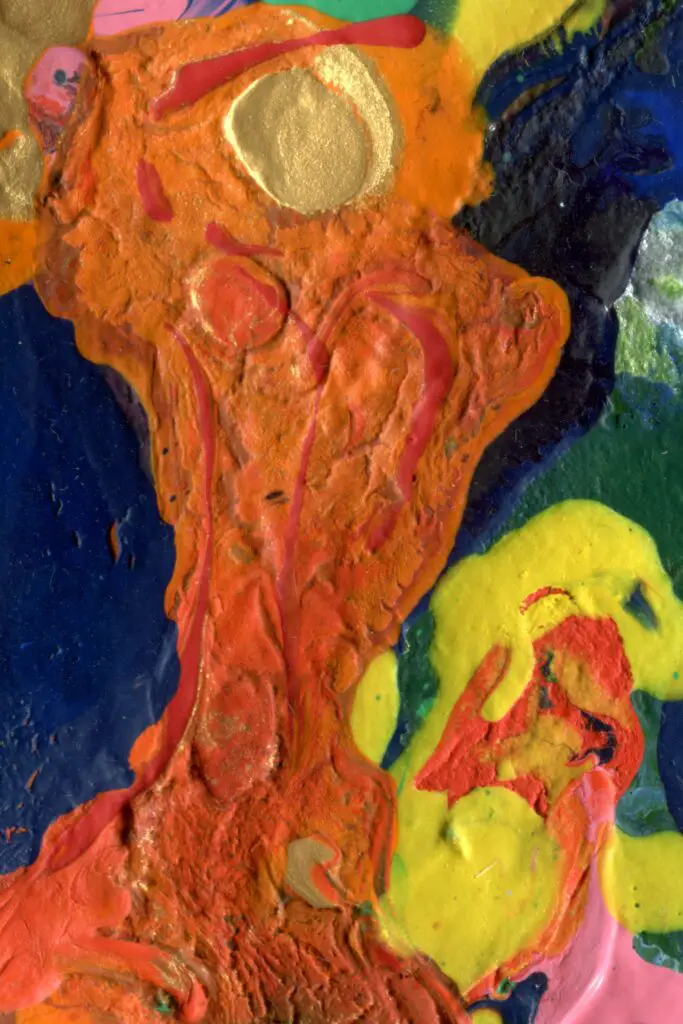
Poor coverage and opacity: The ability of acrylic paint to give good coverage and opacity can worsen over time. There could be streaks or translucent spots in the pigments. Thus, it may be difficult to produce the proper level of vibrancy and saturation in your artwork.
Unpredictable drying times: Old acrylic paint may dry differently. It could be more difficult to layer, or use general painting techniques if it takes longer to dry or dries unevenly. Uneven drying can impact the stability and overall appearance of your artwork.
How to revive acrylic paint that has gone bad?
It can be challenging to restore acrylic paint that has dried out or gone bad, but you can attempt a few methods to make it useful again. Here are some techniques that can help expired acrylic paint usable again.
Lumpy acrylic paint
Acrylic paint should be creamy and smooth to use properly. Clumps in acrylic paint may indicate that the acrylic paint has started to dry or has changed consistency. Even while you can utilize the paint, you should deal with the clumps before using them on your piece of art.
Determine how poor your paint is by looking at it. It can be recoverable if the clumps are small and simple to separate. It might be advisable to toss the paint out if the lumps are vast and tricky to blend back into the paint.
Additionally, you can test the paint to evaluate its coverage, color, and consistency. These two tips will help you save time when working with lumpy paints.
After the assessment, follow these instructions if you still think the lumpy acrylic paint can be fixed.
Break up the clumps: Use a palette knife or a dry mixing stick to break up the paint clumps. To mix the chunks into the paint, gently press them against the container’s side.
Add a medium or water: Try adding a small amount or a painting medium to the paint if the clumps are stubborn and challenging to separate. To dilute the paint and make it easier to mix, gradually add the medium or water while stirring the paint.
Strain the paint: If the paint is in liquid consistency and has clumps, you can strain the paint using a nylon stocking or a fine-mesh sieve. Any leftover lumps will be eliminated during this procedure, giving your acrylic paint a smoother consistency.
Smelly acrylic paint
It is typically not advisable to use acrylic paint if it has a strong, unpleasant smell. A poor odor may indicate that the paint has degraded or become contaminated, impacting its performance and quality. Smelly acrylic paint can unfavorably affect color, texture, and adherence.
There are some reasons why acrylic paint develops a bad smell.
Bacterial or fungal development: It could result from water or moisture getting inside the paint container, which could serve as a breeding environment for both microbes. It might decrease the quality of the paint and cause a bad smell.
Chemical breakdown: Acrylic paints include a variety of chemicals, some of which may degrade or interact with one another over time to produce an unpleasant smell.
Contamination: When paint comes into contact with outside sources like dust, dirt, or other paints, it can lose its freshness and produce a smell.
Ideally, it is better to be careful and avoid using smelly acrylic paint. Prioritize both the standard of your artwork and your health and safety.
Separated acrylic paint
It can indicate that acrylic paint has become old or incorrectly stored when the binding agent and pigments split into distinct layers. All you need to do is combine these layers again to use the paint properly. You can use the below methods to do it.
Mix the layers: Shake or stir the paint container gently to combine the separated layers. Avoid shaking your paint rapidly since it might cause air bubbles and change the consistency of the paint. It isn’t easy to stir when it is in tubes, making mixing challenging. So use a container that can seal up tight. Squeeze all the paint into the container and stir it thoroughly to ensure even consistency.
Add a medium: You can add an acrylic medium if the paint still separates despite stirring. To add the medium to the paint, follow the manufacturer’s directions and add a small amount first. After that, thoroughly mix to incorporate the medium and encourage a stronger bond between the pigments and binding media.
How long does acrylic paint stay good for?
Acrylic paint’s shelf life can vary based on several variables, including the brand, paint quality, storage conditions, and whether or not the paint was initially opened.
Acrylic paint that was never opened can have a shelf life of up to ten years, with some premium paints having a shelf life of five to ten years or longer. For individual products, it is usually advisable to check with the manufacturer because shelf life can vary.
Acrylic paint that was opened and exposed to air usually has a lower shelf life. Opened acrylic paint typically lasts between two to five years. However, this can change depending on the brand, quality, storage conditions, and degree of air exposure.
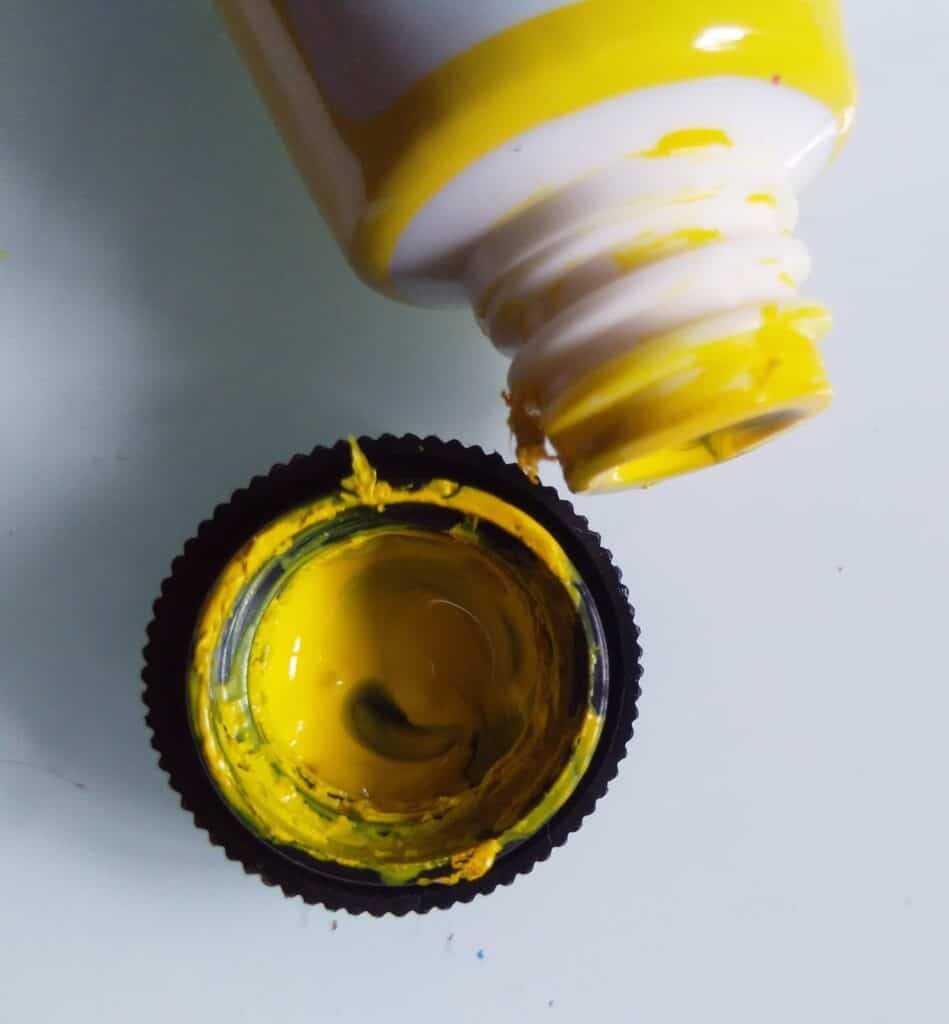
How long does acrylic paint last in an unopened container?
It always depends on the factors I mentioned above as brand, paint quality, and storage conditions. Yet, high-quality paints may even have a shelf life of five to ten years or more.
Unopened tubes or bottles of acrylic paint can last for several years. You can follow some tips to maximize the shelf life of acrylic paint when it is stored in a container.
- Acrylic paint should be kept in a cool, dry area. Extreme temperatures can have an impact on the paint’s quality and consistency. To prevent the paint from drying out or thickening, avoid storing it in areas that are too hot or cold.
- Keep acrylic paint away from areas with high relative humidity. Excessive moisture might encourage the growth of mold or make the paint runny. To preserve the integrity of the paint, aim for a moderate humidity level.
- Keep acrylic paint away from harsh natural or artificial lighting. Long-term UV exposure can cause color fading or paint deterioration. To protect it from light, store your paint in a dark or opaque container or wrap it in paper or fabric.
- Acrylic paint should be stored in airtight, properly sealed containers to keep out air. Exposure to oxygen can make the paint dry out or develop a skin on the surface. Transfer the paint to an airtight container if the original container is not airtight, or use plastic wrap or a plastic bag to completely seal the opening.
- Write the name of the color, the manufacturer, and the date of purchase on the paint containers. This makes it easier for you to monitor the paint’s age and storage time.
Although acrylic paint can last a very long time, it’s still important to regularly check and test the paint for any signs of deterioration, such as color, texture, or odor changes. You can read the following article to know more about acrylic paint’s lifespan. How long does acrylic paint last? All you need to know
How long do acrylic paints last once opened
Once opened and exposed to air, acrylic paint typically has a shorter shelf life than unopened paint. It can change based on the paint’s quality, how it is stored, and how much air exposure it has.
Opened acrylic paint typically lasts two to five years; however, this is only an approximate estimation that can differ depending on the paint’s type and quality. Lower-quality or student-grade paints may have a shorter shelf life than artist-grade acrylic paint. You can follow a few tips to increase the shelf life of opened acrylic paint as stated below.
- After each use, ensure the container is well sealed. It helps in reducing air exposure and keeps the paint from drying out.
- Keep the paint out of the sunlight and severe heat in a cool, dry location. To avoid unwanted degradation, keep the environment stable.
- Use clean brushes and tools to prevent contamination when handling the paint. Also, avoid mixing various paint brands or varieties in one container because it can impact the stability and shelf life.
- Check the paint regularly for signs of damage, such as color changes, texture changes, or mold appearance.
Also, you can follow specific recommendations made by the manufacturers of the various paint brands.
Conclusion
In conclusion, it’s up to you if you want to use acrylic paint that has expired. But before you decide, it’s important to know the facts. By understanding what can happen when paint expires, you can avoid any problems and keep your artwork looking good. This way, you’ll save time and make sure your art stays as awesome as you intended it to be.

